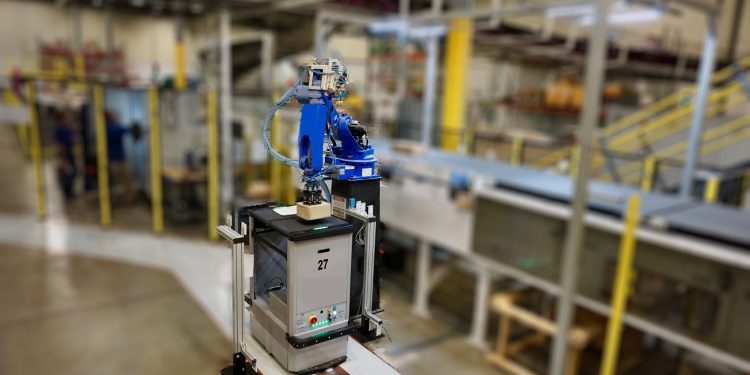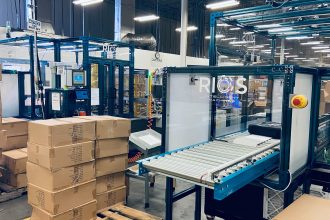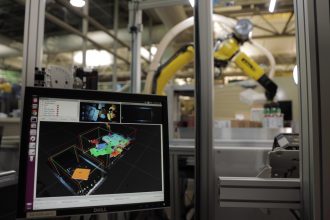Combining Sortation with Robots

You’ve heard about the many ways autonomous robots can help in your warehouse, especially when you’re dealing with a labor shortage. Put simply, autonomous mobile robots (AMRs) do a great job of taking over all the mundane, manual tasks that many employees don’t want to manage—picking, stocking shelves, and transporting goods around the facility.
However, you might not think of the role they can play with sortation. Today’s AMRs can also further enhance already automated sortation or sorting systems in several ways. When you combine AMRs with automated sortation, you can gain precision, efficiency, flexibility, and overall operational effectiveness. Combined, this can lead to continuous improvement and improved customer satisfaction.
Taking a closer look at the many benefits you might experience, they include:
Greater precision and flexibility: Advanced robotic systems can handle a host of sizes, shapes, and product types with better precision. A wider variety of products can be sorted and items can be handled that might be difficult in a traditional or automated system without the addition of robots.
Improved efficiency and speed: Automated environments are already efficient, but AMRs can multiply that effect. Robots help sort items faster, they can work without breaks, and maintain a consistent pace that boosts overall throughput.
Enhanced scalability: When operations are busy, the old approach was applying more labor to help scale up. With the labor shortage, facilities need a new approach, and robots are it. You can easily scale up with more robots when you are experiencing spikes in volume or peak season. When things slow down again, you simply take a few robots out of the fleet. This allows you much more flexibility over the course of a year.
Reduced bottlenecks: For all the good sortation systems do, they are sometimes susceptible to bottlenecks. Robots can identify and adapt to bottlenecks, especially if they are equipped with AI capabilities. This helps provide for smoother operations and reduces any hold ups in processing the movement of goods.
Advanced sorting: When equipped with advanced capabilities like AI or machine learning, robots can make decisions about item sortation. Using size, weight, destination, or other characteristics, robots can sort products to assist in the sortation process.
Integration with WMS: Robots are also easily integrated with warehouse management systems (WMS) which enhances real-time data and analytics. With sortation, this helps optimize workflow.
Operational resilience: robots are able to operate in most environments, whether cold, warm or hazardous. This allows them to coordinate with sortation no matter what the company or its operational environment.
Long-term cost savings: Robots are costly to buy into, but over the long run, they can return a significant ROI. Combined with sortation, you’ll realize reduced operational costs, better efficiency, and reduced errors.
When you put all the benefits together, the combination of robots and sortation systems leads to greater flexibility and improved efficiencies. In an omnichannel environment, that’s well worth an investment.
To learn more about MHI’s Conveyor and Sortation Solutions Industry Group: www.mhi.org/conv
For more articles and podcasts about Conveyors and Sortation:
Using Simulation and Digital Twins to Increase Productivity and Quality and Reduce Cost
Purchasing Conveyors With Sustainability In Mind
Using Conveyors for Loading and Unloading Trucks & Containers
Podcast: CSS – HOW TO AUTOMATE FOR THOSE WHO HAVEN’T AUTOMATED
Reconfigurable Conveyors For The Win
The Importance Of Digitization In Material Handling



